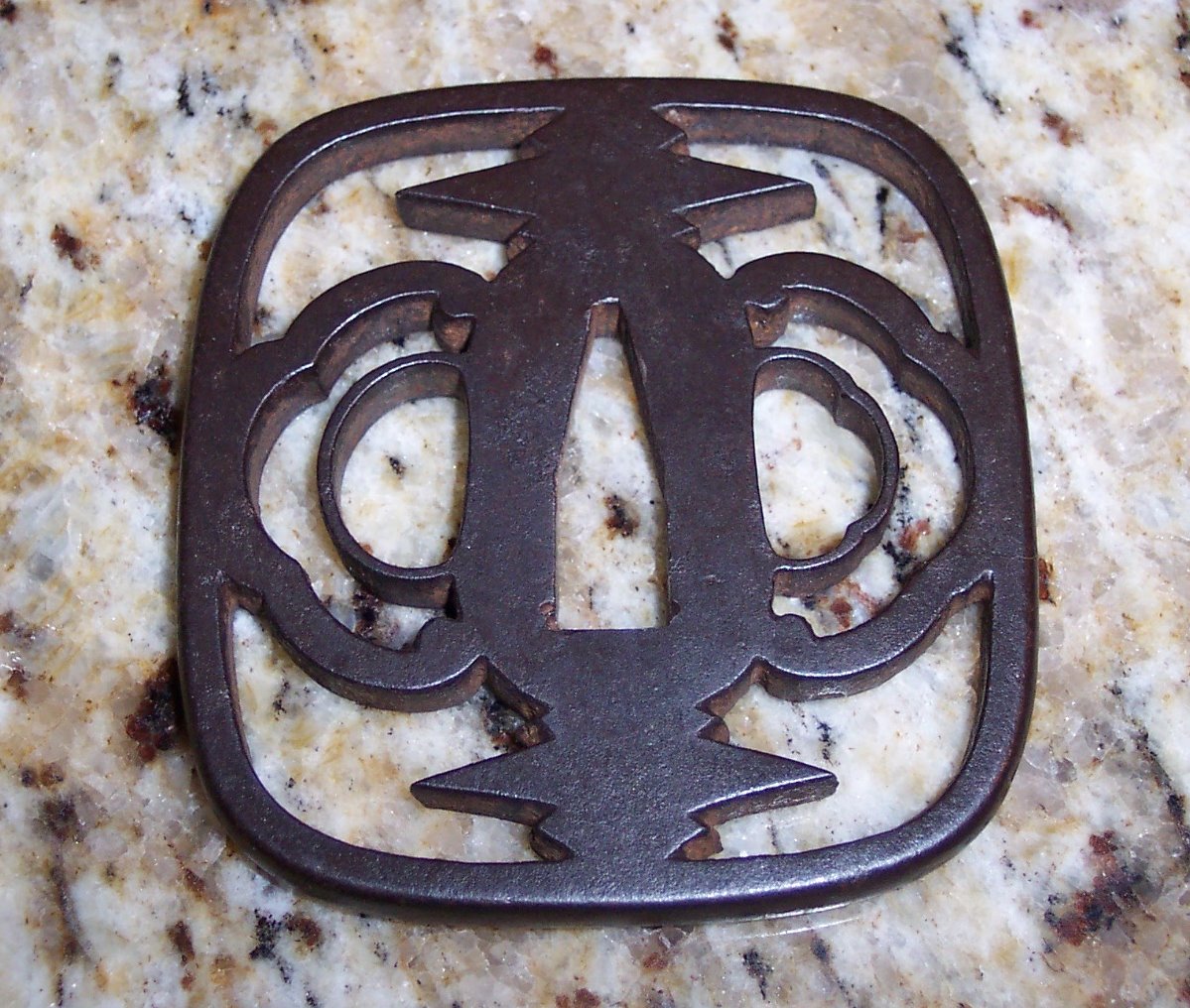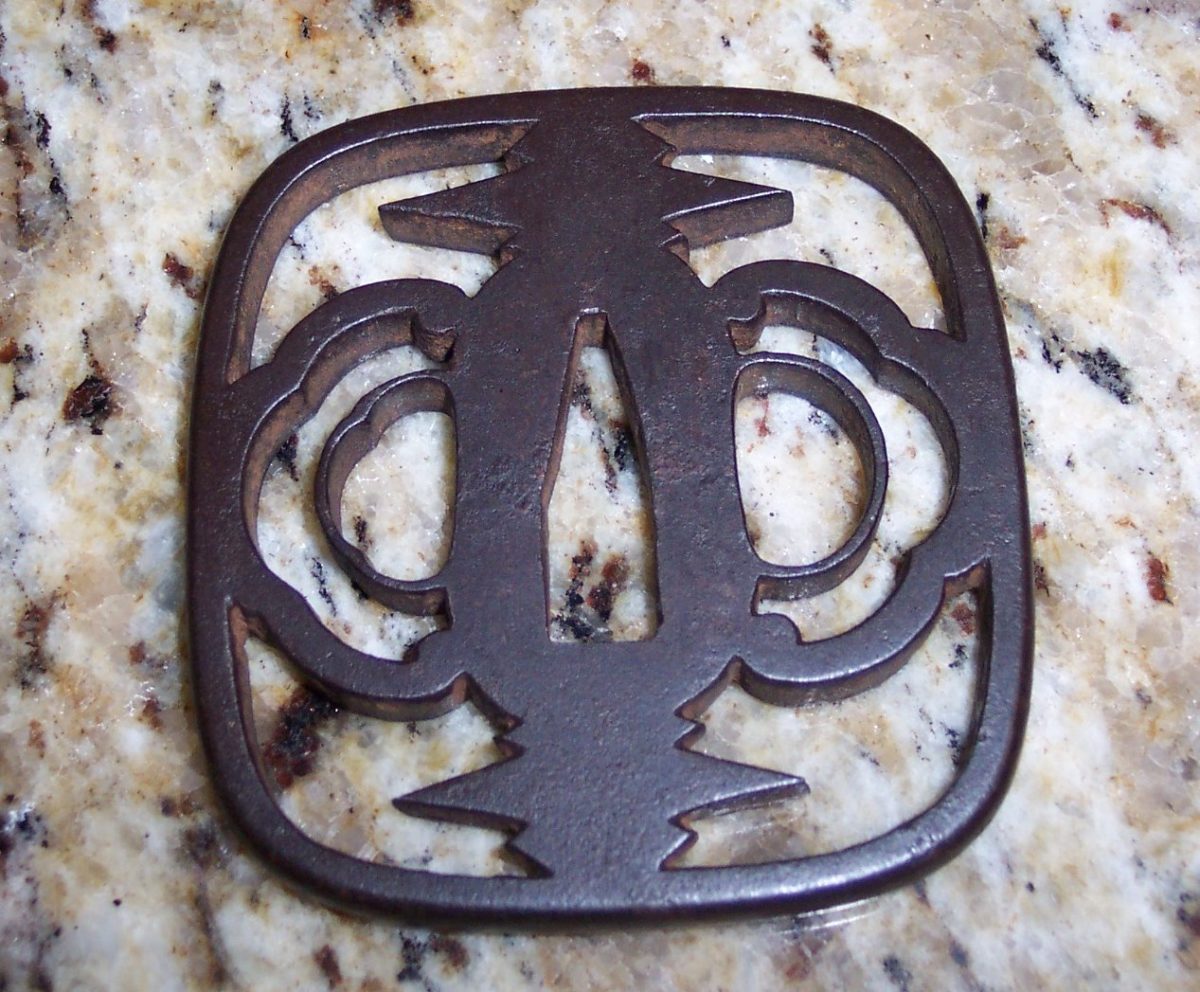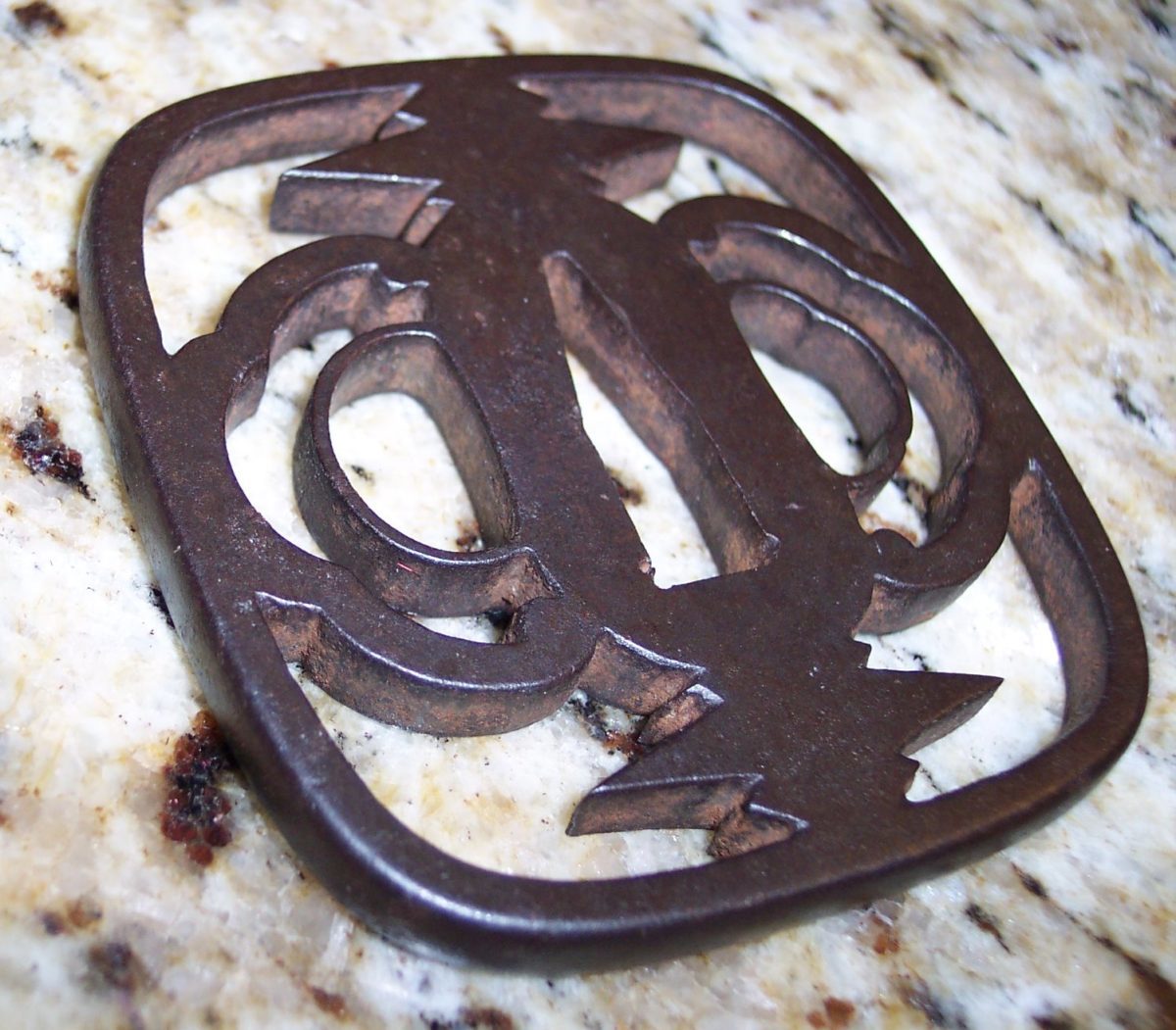Akasaka Sukashi Tsuba
The earliest Akasaka tsuba date from the beginning of the Edo period when the (likely legendary) dealer Kariganeya Hikobei was supposed to have moved from Kyoto with two skilled tsuba makers named Tadamasa to set up business in Akasaka. Because of this story, many of the older books identify Kyoto as the origin of the Akasaka tsuba style. More recent research into the design motifs of the tsuba tends to lean toward Owari as a likely source. It is probably reasonable to assume that with the relatively free movement of people, products and ideas in the Edo jidai, the Akasaka makers were familiar with and influenced by both Kyo and Owari tsuba styles. As the Edo period progressed, this cross-fertilization continued to the point that it becomes very difficult to distinguish the origin of an unsigned tsuba. The work of tsubako around the country followed popular fashion more than it adhered to a particular regional style. As with swords, the iron production became centralized and processing methods changed such that much of the character of the material was lost.
Akasaka tsuba are constructed with a hard skin layer sandwiching softer, inner layers. This can sometimes be seen on the mimi or in the walls of the sukashi. I have not seen this technique used on either Kyo or Owari tsuba. I suspect that it was a way of saving on labor and/or expensive material, but may have enabled some particular aesthetic effect. I doubt that it was intended as a functional improvement. Bob Haynes has pointed out tsuba that appear to be Akasaka, but show age that predates the supposed origin of the style. We don’t know who these “Muromachi Akasaka” were or where they worked. -Jim Gilbert.
Akasaka literally translated means “Red Hill”. More information on the origins of Akasaka tsuba can be found here: http://markussesko.com/2014/01/27/on-the-origins-of-akasaka-tsuba/
Akasaka Sukashi tsuba are characterized by bold, sometimes abstract depictions of scenes symbolizing Japanese culture. Some are also symmetrical designs, such as with this tsuba.
Period: Edo
Diameter: 6.3 x 6.8 cm
Nakago Ana: 2.5 cm
Price: SOLD



